The Heat Scale of Thai Curries: Which Thai Curry Is Spiciest?
Do you wonder Thai Curry Is Spiciest? In this article, we’ll take a closer look at the spiciness level of different Thai curries. So you can choose the one that best suits your palate. Discovering which Thai curry is the spiciest may help you decide which one is for you.
Thai cuisine delights taste buds with its special mix of flavors and spices, especially its famous curry dishes. With so many different types of curry dishes available, it can be difficult to determine which one packs the most heat.
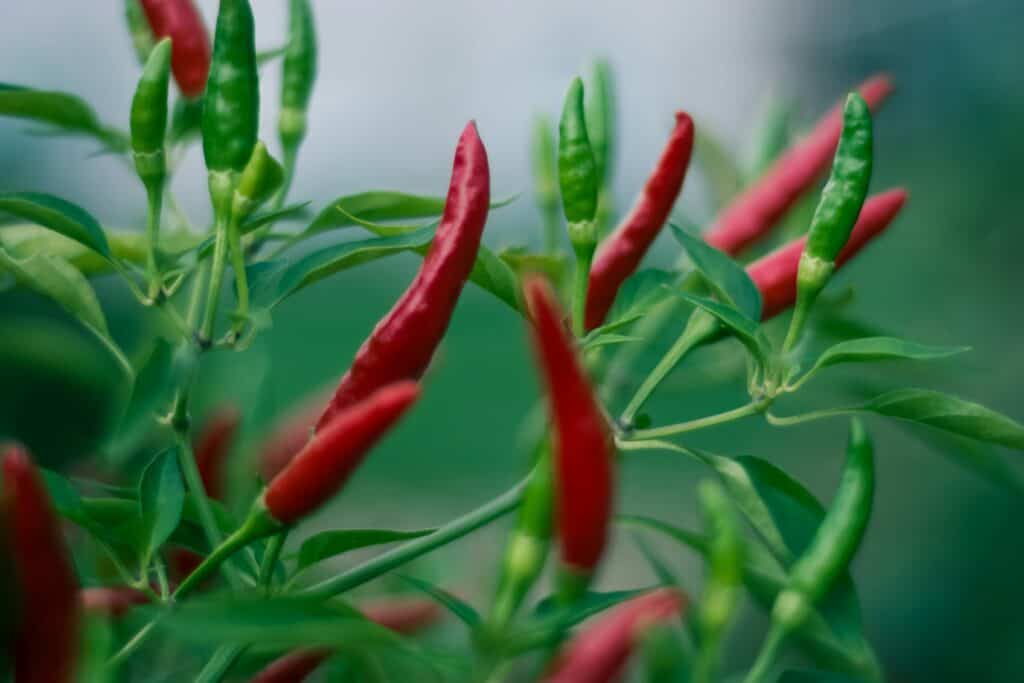
Thai Curry Variant Spice Level
- Jungle Curry: Very High
- Thai Green Curry: High
- Thai Red Curry: Medium-High
- Panang Curry: Medium
- Thai Yellow Curry: Medium
- Massaman Curry: Mild
Please note that the spiciness level can vary depending on the cook and the recipe. Some people may find green curries to be very spicy while others may find them mild. In authentic Thai cuisine, green curries consistently carry more heat than red curries.
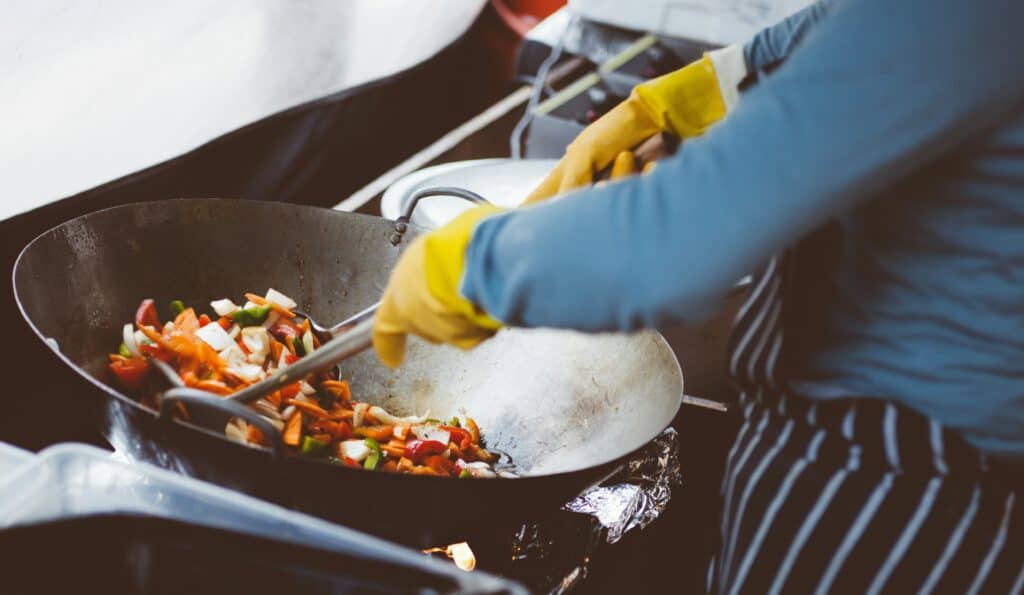
Additionally, the level of spiciness varies across different regions. Green Thai curry originating from southern and northern Thailand, excluding tourist spots, tends to be notably spicier. This heightened heat is attributed to the inclusion of bird’s eye chillies, renowned for their intense spiciness. Genuine bird’s eye chillies, smaller and far spicier than the varieties often mislabeled in UK supermarkets, contribute to the fiery heat of authentic green curries.
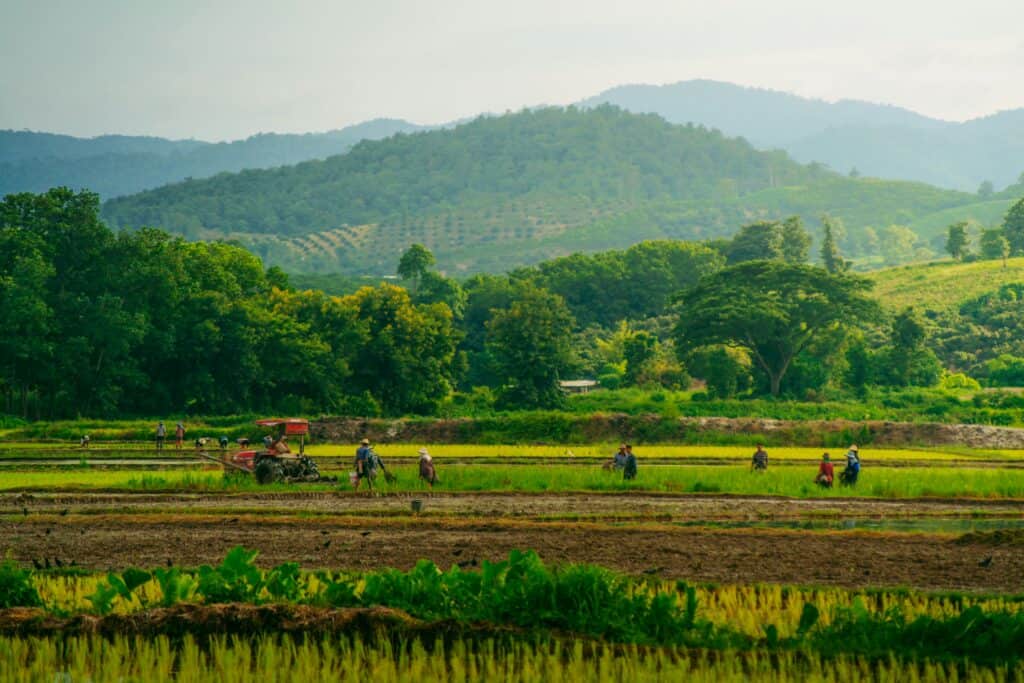
So, there you have it, a quick breakdown of the spiciness level of various Thai curries. Remember that the spiciness can vary depending on the cook and the recipe. So if you’re unsure, it’s always best to ask your server or the chef before ordering. No matter which curry you choose, you’re sure to enjoy the delicious blend of flavors and spices that make Thai cuisine so unique and beloved. Now we will further break down each type of curry.

Which Thai Curry Is Spiciest?
Jungle Curry – Not for the Faint of Heart!
When looking for which Thai curry is the spiciest, Jungle Curry is up there. On the extreme end of the heat scale, it doesn’t get much spicier than Jungle or Kaeng Pa curry. This dish is made with just chilli pepper, salt, and fish sauce, and traditionally includes a mix of exotic vegetables like bamboo shoots and Thai eggplant. While not as flavorful as some of its cousins, it definitely brings the heat! If you want to try your hand at making your own paste, be sure to temper the spiciness with generous servings of jasmine rice or vegetables.
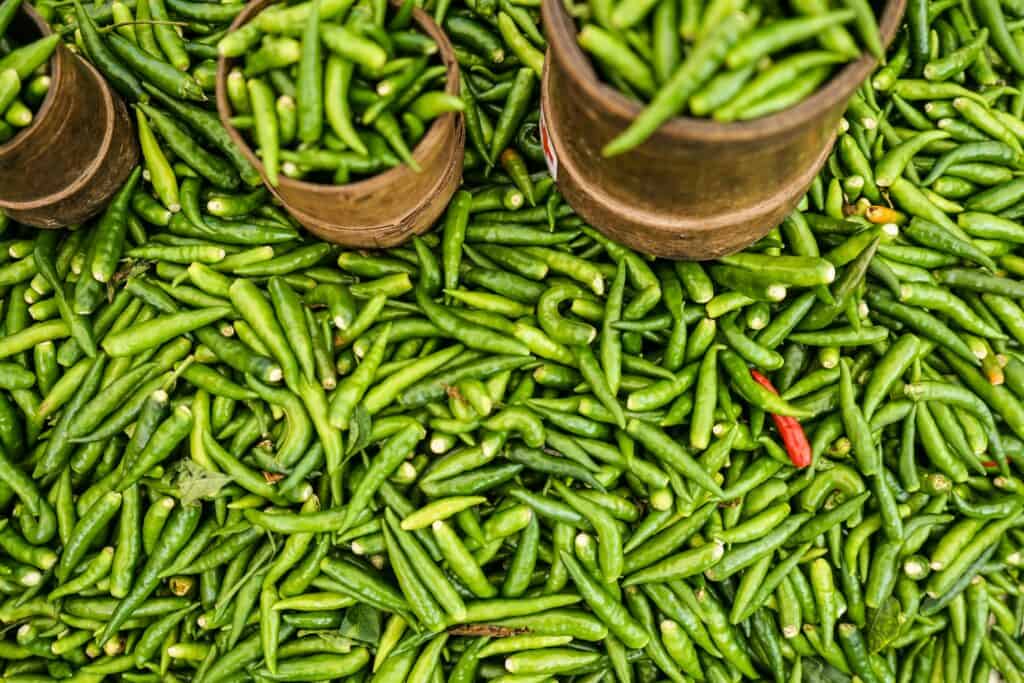
Thai Green Curry – High Heat
Thai green curry, or Gaeng Keow Wan, is renowned for its high heat level. The Thai green curry is one of the most popular curry choices among spicy food lovers. Made with green curry paste that includes fresh green chilies, shrimp paste, and a variety of fresh ingredients like Thai basil. This curry delivers a fiery heat that sets it apart from other curries. This green curry sauce is a staple in many Thai dishes. It offers unique flavors that appeal to hot pepper lovers.

Thai Red Curry – Perfect for Beginners
The most common type of curry dish, Thai red curry, is a great choice for those just beginning to explore the world of spicy Thai food. Made from Thai curry paste that includes red curry paste, red chilies, garlic, cumin seeds, coriander seeds, and coconut milk.
It has a mild heat that comes from the chilies and galangal. With a hint of sweetness from the coconut cream. It’s perfect for adding just a little bit of spice from the red chiles without overwhelming your taste buds!
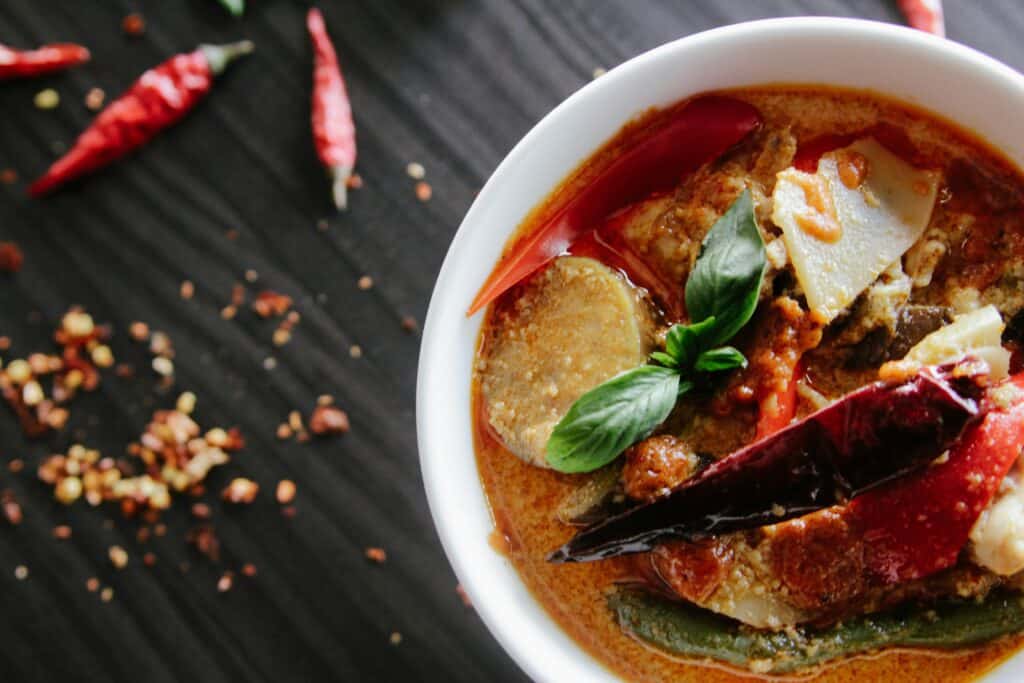
Panang Curry – Medium Level Spice
Panang curry, an intense orange-colored dish, derives its name from the city of Phanaeng in Thailand. While it’s still considered mild-medium spicy, this creamy, peanut-flavored curry offers more kick than red curries. Made with Thai bird chilies and ground peanuts, Panang curry provides a spicy punch balanced with a rich texture from coconut cream.
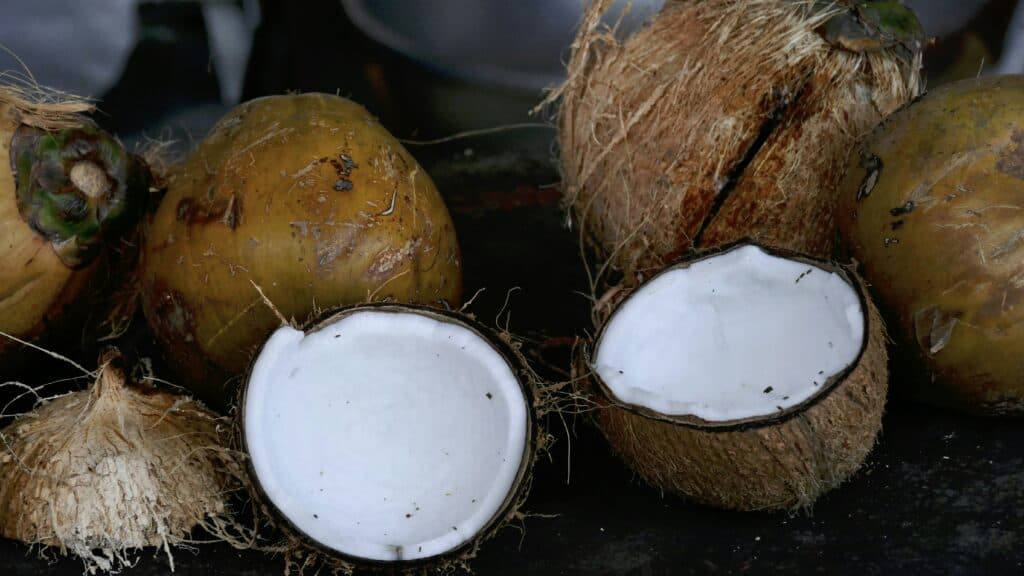
Yellow Thai Curry – Mild but Filling Taste
Yellow Thai curry is known for its mild intensity and still provides a wonderfully rich flavor. It’s the ideal curry to try if you’re not used to eating spicy food yet. When cooked, it has a thicker consistency than other Thai curries. Thanks to coconut milk which gives it a creamy texture and creamy yellow hue. To give your yellow curry paste an extra kick, try adding some Thai chilis or red chili powder!
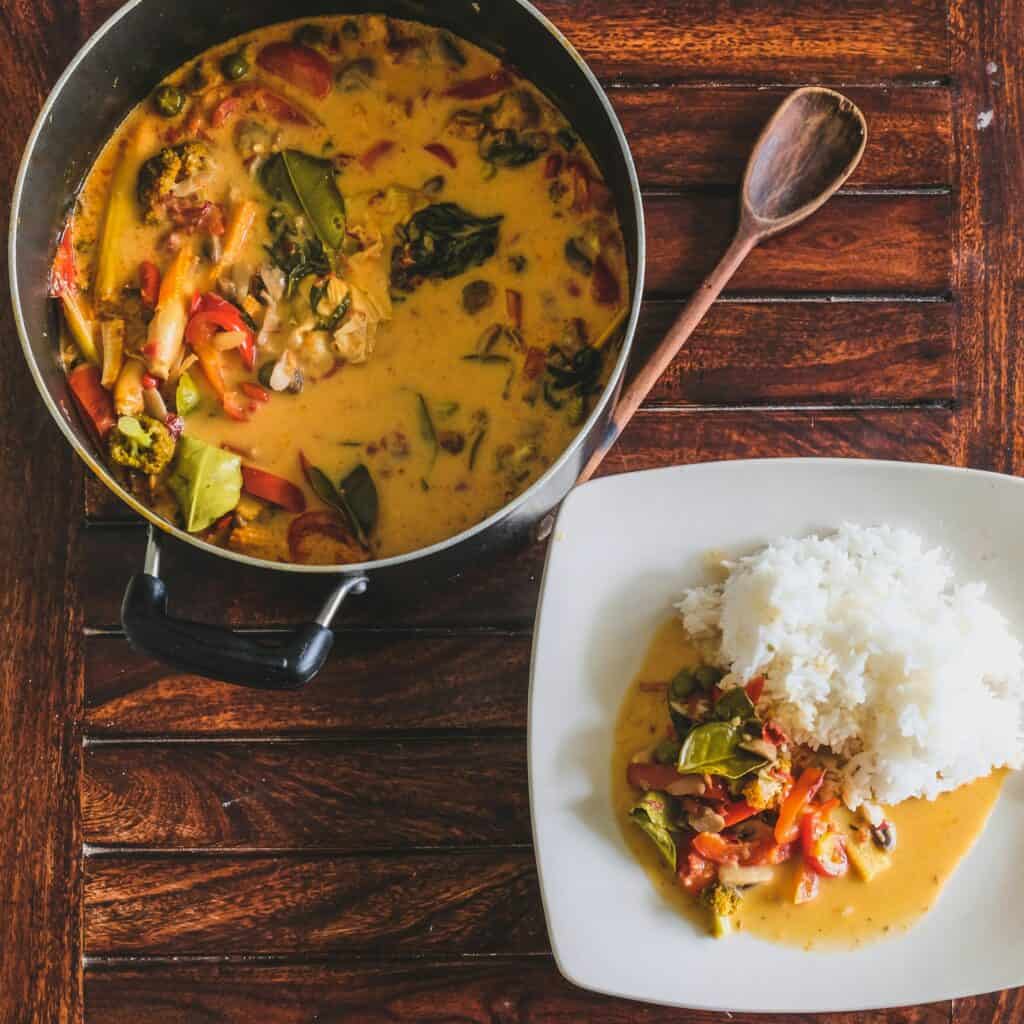
Massaman Curry – Mysterious and Sweetly Spicy Flavor
Massaman curry is at the opposite end of the heat spectrum from yellow curry. It has a slightly sweeter taste than other curries, thanks to its unique blend of spices that includes ground peanuts, tamarind paste, and cinnamon—far different from the garlic, chili, and ginger mix typical for most Thai curries.
Massaman offers an intense level of spice thanks to a generous kick from chili peppers. If you want something that packs a big punch while still remaining flavorful and fragrant, this is definitely worth a try!
Weather you are eating a basic level curry or spicy curry, they all pair beautifully with a fresh squeeze of lime juice.
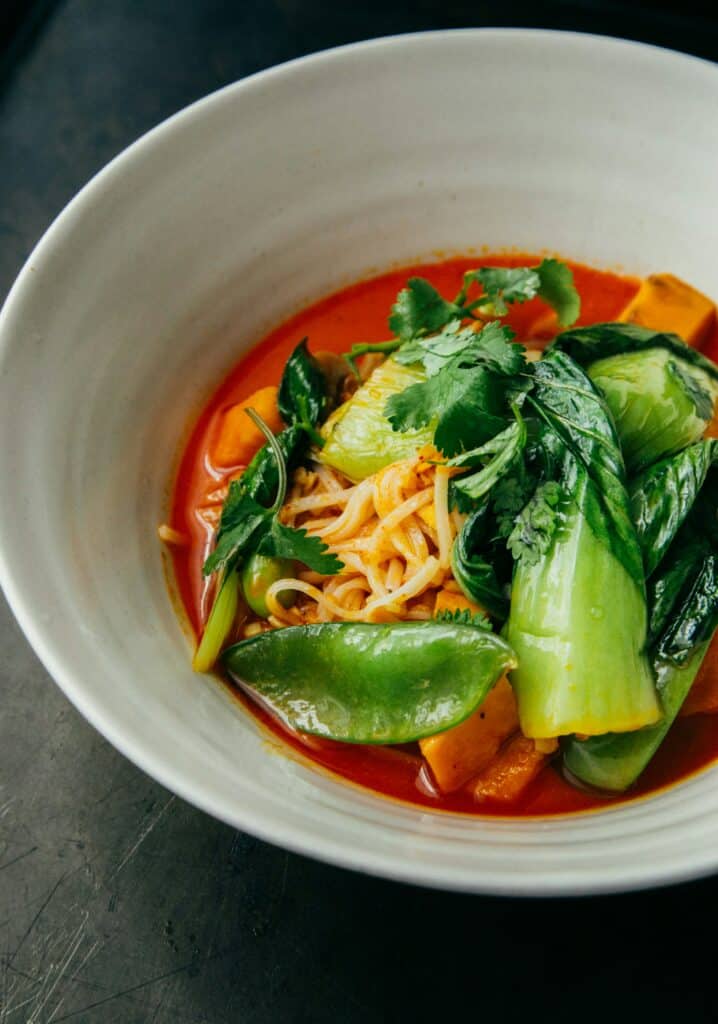
Which vegetables are used in Thai curry?
Thai curry bursts with vibrant flavors and colors, making it a versatile dish for incorporating a variety of vegetables. Ideal vegetables for Thai curry include bell peppers, carrots, zucchini, eggplant, and snap peas, which add both texture and nutrition. However, feel free to get creative and add whatever vegetables you like!

How to Make Thai curry Vegan
For a vegan twist, substitute tofu or tempeh for traditional meat. Coconut milk replaces dairy, providing a creamy base that complements the spices perfectly. Add a dash of soy sauce, tamari, vegan fish sauce, mushroom sauce, or vegan Worcestershire sauce instead of fish sauce for depth of flavor. Fresh herbs like basil and cilantro enhance the dish, while a squeeze of lime juice brightens it up. Enjoy a wholesome and flavorful vegan Thai curry with these simple substitutions!
What is the Difference Between Thai Curry and Indian Curry?
Thai people and Indian people both have rich culinary traditions, but their curries are distinct in several ways. Thai curries, often found in Thai restaurants, use fresh herbs like young green chilis, kaffir lime leaves, and Thai basil as main ingredients.
The most popular curries in central Thailand, such as green and red curries, are coconut milk-based and have a sweet taste balanced with much heat from red chillies and eye chilies. Indian curries, on the other hand, typically use curry powder and are often made with store-bought paste or ground spices processed in a food processor. Indian curry relies heavily on ingredients like cumin seeds, coriander seeds, and white peppercorns.
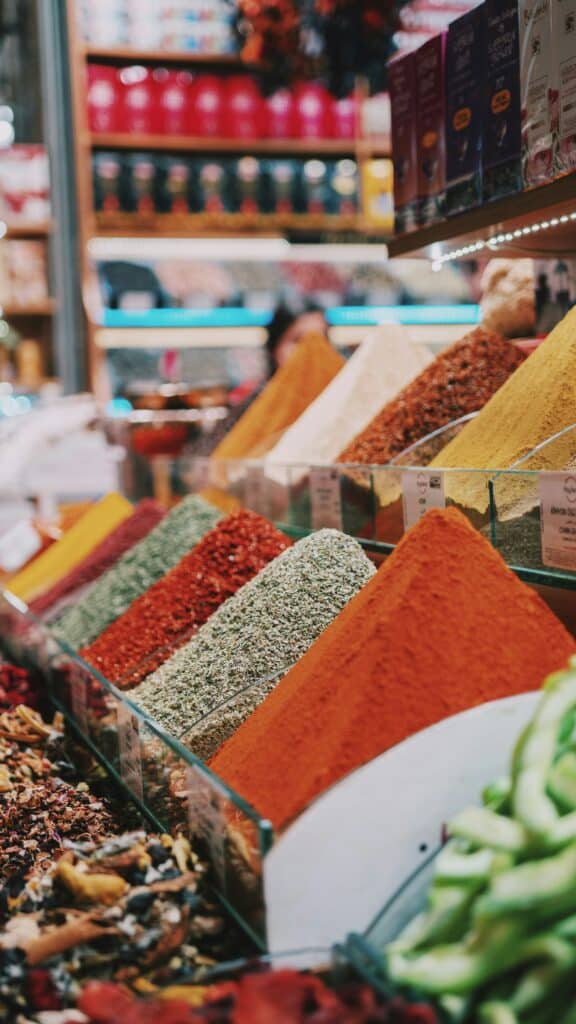
The main difference lies in the flavor profiles: Thai curries are often lighter with a spicy and sour curry profile, while Indian food curries are richer with a spicier, tomato sauce-based consistency. Popular Thai curries like Massaman, made with Massaman curry paste, and sour curries from southern Thailand, offer varying heat levels and unique health benefits.
Both cuisines offer a variety of kinds of curry pastes and heat levels, making each delicious dining experience unique. For more insights and recipe books, you can explore Q&A communities like the Stack Exchange network and Stack Overflow, where online communities share tips and discuss the hottest curry and other spicy soup recipes.
Conclusion: Which Thai Curry Is Spiciest?
In conclusion, exploring the world of spicy Thai curries can be a tantalizing and delicious journey. Each curry has its own unique blend of flavors and level of heat, from the mild and sweet yellow Thai curry to the fiery and exotic Jungle curry.
Whether you’re a beginner or a seasoned spicy food enthusiast, there’s a Thai curry out there for everyone. By understanding the different types of curries and their origins, you’ll be able to make informed decisions on which curry to order and enjoy the full spectrum of Thai cuisine. So go forth, and spice up your life with some delicious Thai curry!




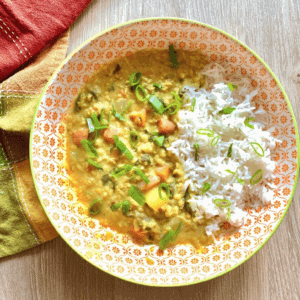
This was great info thank you. Where do you think I can buy jungle curry? Can’t seem to find it
I haven’t seen it in the grocery store but you may be able to find the curry paste on amazon or in a specialty Thai shop. Or check at your local Thai restaurants to see if they’ll make it for you! HOpe that helps 🙂